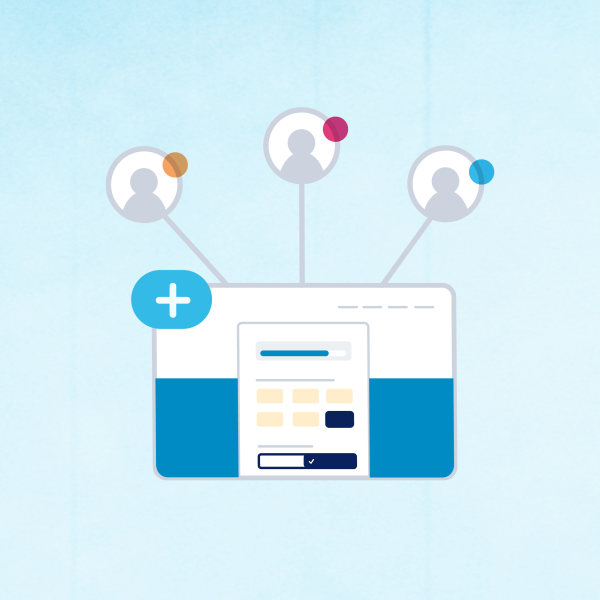At this year’s Netroots Nation Conference, the largest annual conference for progressives, ActBlue was proud to host a panel on grassroots organizing in 2020. The discussion was led by ActBlue’s Rach Junard, Deputy State and Local Outreach Director, and featured Hillary Holley, Director of Organizing at Fair Fight PAC; Jamaä Bickley-King, Director of Voter Engagement at Collective PAC; Patrick Stevenson, Chief Mobilization Officer at the DNC; and Jocelyn Strauss, Senior Client Success Manager at Mobilize.
This seasoned group of digital organizing practitioners and movement makers shared organizing success stories from a historic year and case studies demonstrating the power of small-dollar donors. We’ve provided a recap of this discussion below. Read on to learn about how grassroots fundraising *is* organizing and how progressive leaders are adapting to unprecedented times with the support of small-dollar donors!
Rach: How has digital fundraising and engaging with small-dollar donors functioned as a form of organizing more broadly for your organization?
Hillary: Small-dollar donations not only increase your base but they also keep people engaged, especially when we need to do massive engagement across the country — [like now,] with vote by mail and the attacks against the USPS. It gets people to feel like they’re actually part of a movement.
Patrick: We’ve been doing a lot of modeling for GOTV, and for part of that work, we’ve been doing modeling for propensity to donate and modeling for propensity to vote to see how we should target folks. The folks that donate are going to show up and vote!
Jamaä: We saw a particular [fundraising] spike during the protests surrounding the murder of George Floyd. If you were a Black or Black-adjacent organization, you saw a massive increase in engagement and volume due to that moment. Those organizations have reached another level in organizing work and are able to increase their capacity and forge new partnerships to move their work [thanks to grassroots donors].
Jocelyn: At Mobilize, [an events management and volunteer recruitment platform,] we have a donation integration that allows organizers to make a donation ask that can be configured for small dollars. We see people using it strategically. 20% of folks signing up on Mobilize to volunteer who are asked to make a donation are donating, with an average initiated contribution size of $26. We see in the data that they are way more likely to show up, reducing your flake rate for events too.
Rach: Similar to the first question, how have you seen digital fundraising fit into your organizing work with campaign volunteers?
Jocelyn: We see it across the board. We’ve done a lot of work to build out the virtual event
features we already had. But on top of that, you can plug in those donation asks to build up your base. I think the thing that is most surprising is what hasn’t changed. People are still encouraging their friends to get involved. By making that donation ask, you’re able to pull in new volunteers and new donors. Folks are able to consistently build a community even though it’s a virtual space.
Rach: And Jamaä, I want to direct this question toward you. How have you shifted your digital fundraising strategy as a result of the massive Black Lives Matter movement? And, how can small-dollar donors and other candidates support Black candidates right now?
Jamaä: We had to find a way to pivot in a very short order. That exposed a lot of issues we saw in our segments in digital targeting for African Americans and people of color online. So we had to get creative and scrappy.
We had to merge our relational organizing with digital organizing. And we had great success, and now we can launch new programs. For a lot of Black candidates, the barrier to entry is high because they don’t have a fundraising network of high-dollar donors that can help their campaign get off the ground. And that’s why Collective PAC stepped in in 2016 to help raise candidates’ profiles and bridge that fundraising gap with early money from small-dollar donors.
Rach: Over the past four years, the DNC has made changes to the way you incorporate small-dollar donors into your digital organizing by shifting to a more holistic digital program. Patrick, what changes have led to the most success for you?
Patrick: For the last four years, we’ve been trying to modernize our fundraising approach. Mail is probably more relevant than ever with the increase in reliance on voting by mail, and the way we think about mail for fundraising and organizing is that it shouldn’t be siloed off from digital. So we’ve worked on incorporating digital components into our direct mail program that not only remind folks, “Hey there’s a letter from Barack Obama in your mailbox asking you to donate,” but also asking those folks “Can you go a step further and volunteer?”
Hillary: Voting by mail is a new thing for a lot of registered Americans today. Fair Fight was founded in the wake of the Stacey Abrams for Governor campaign in Georgia … and Georgia is a very complex state where you have a ton of voters of color everywhere. I know a lot of folks like to think of rural areas as white, and that is a lie — it is a racist assumption, to be frank. So [at Fair Fight] we think about targeting donors and volunteers in the metro area digitally, but then we have to have direct contact with those in rural Georgia. And this applies to rural America in general, because there is a severe lack of broadband access in our rural areas — people cannot get on the internet because they just don’t have access to it …
When COVID-19 hit, we automatically knew that vote by mail was going to be the thing that came to the fore. Investment in voter education is important because the follow-up in the chase is just so critical with vote by mail. That’s what it’s going to take to win an election — the voter education piece and the voter protection piece.
Rach: Thank you Hillary! Love that answer. I’m a huge advocate for rural training everywhere. I work primarily with candidates in the South, but there are rural areas in the Midwest, on the West Coast, even in the Northeast, so don’t count us out. We need education as well.
This next question goes out to everybody. What is one thing that has surprised you the most this year with regard to your digital organizing strategy? Are there key takeaways that you’ve seen?
Hillary: I would say one of the takeaways is that we had to obviously convert all of our fundraising events to digital fundraising events. We realized that if we kept our ticket prices the same then we wouldn’t actually reach the capacity that we [wanted]. We had the idea to lower our ticket price significantly. I think at one point for the first fundraiser we did, we lowered it to $25 and within the first few days we had over a thousand people sign up. So we realize that making digital fundraisers more accessible to small-dollar donors allows us to take in a lot more money.
Patrick: A really big technical challenge for us is to try to identify historic supporters who are tuning in for 2020, and how to reactivate them so that they can engage in small-dollar donor activity. The thing that has surprised us again is how many of those people actually want to take meaningful, organizing action to defeat Donald Trump beyond a $25 donation.
Jamaä: We were surprised to be in direct competition with everybody on the internet. You know, in a normal election year we might be in competition with other organizations for our data segments, but now you’re in competition with everybody. So [there is not] novelty in doing [your work] online.
Jocelyn: From our vantage point [at Mobilize], we get to see what folks are doing, and what we saw is the pivot in a lot of folks’ digital strategy. Education and training dominated all summer, and I feel like that’s pivoting now into more action-oriented things.
Rach: Last question! Thinking about 2020 as the beginning of a new era for grassroots organizing: What are the most important changes we must make to face the future of organizing effectively?
Jocelyn: This is really a unique moment in recent history. There is so much energy right now and so many people we see volunteering for the very first time ever. The big challenge we see is how do we keep that momentum going past 2020, because we are going into a year that is going to be really important with redistricting and all sorts of battles at the state level and state legislatures. A huge focus for us is making sure we really optimize digital tools to increase civic engagement and advocacy work at the local level and making sure that it’s really equitable and accessible to everyone.
Hillary: I agree. Staying engaged after 2020 ends is the key, and it’s really making sure that we’re in every single community, not just the metro areas that we see as safe havens for progressives because that’s a myth. So not packing up, doubling-down, and staying connected. That’s how we win.
Patrick: I think one of the most exciting things that has happened over the past few years is just how smart and sophisticated small-dollar grassroots donors have gotten. I think there are a lot of organizations in our space that still treat grassroots donors as though they are just not that smart and not that sophisticated, and I don’t think they’ll be rewarded for that long-term.
Jamaä: We’re really excited about all the new energy and people who are in this now or have now raised their political antenna over the course of the last month, especially those that are African American, and we’re seeing this new engagement. It requires a conversation not only with those people who are newly activated but also with the funder so that they’re not engaging [with new supporters] incorrectly.
From all of us at ActBlue, thank you to everyone that participated in this panel! The small-dollar donor community is vast and diverse, powering the movements and missions that are going to change history. To read more about the work these people-powered groups are doing, click on the links below:
Mobilize
Collective PAC
Fair Fight PAC
DNC



